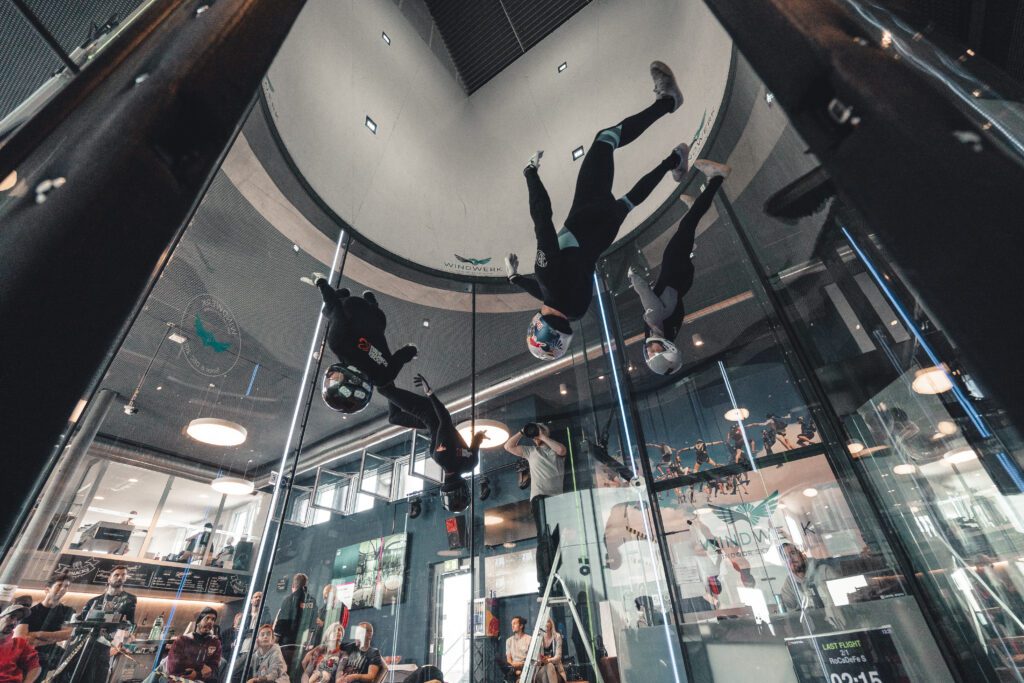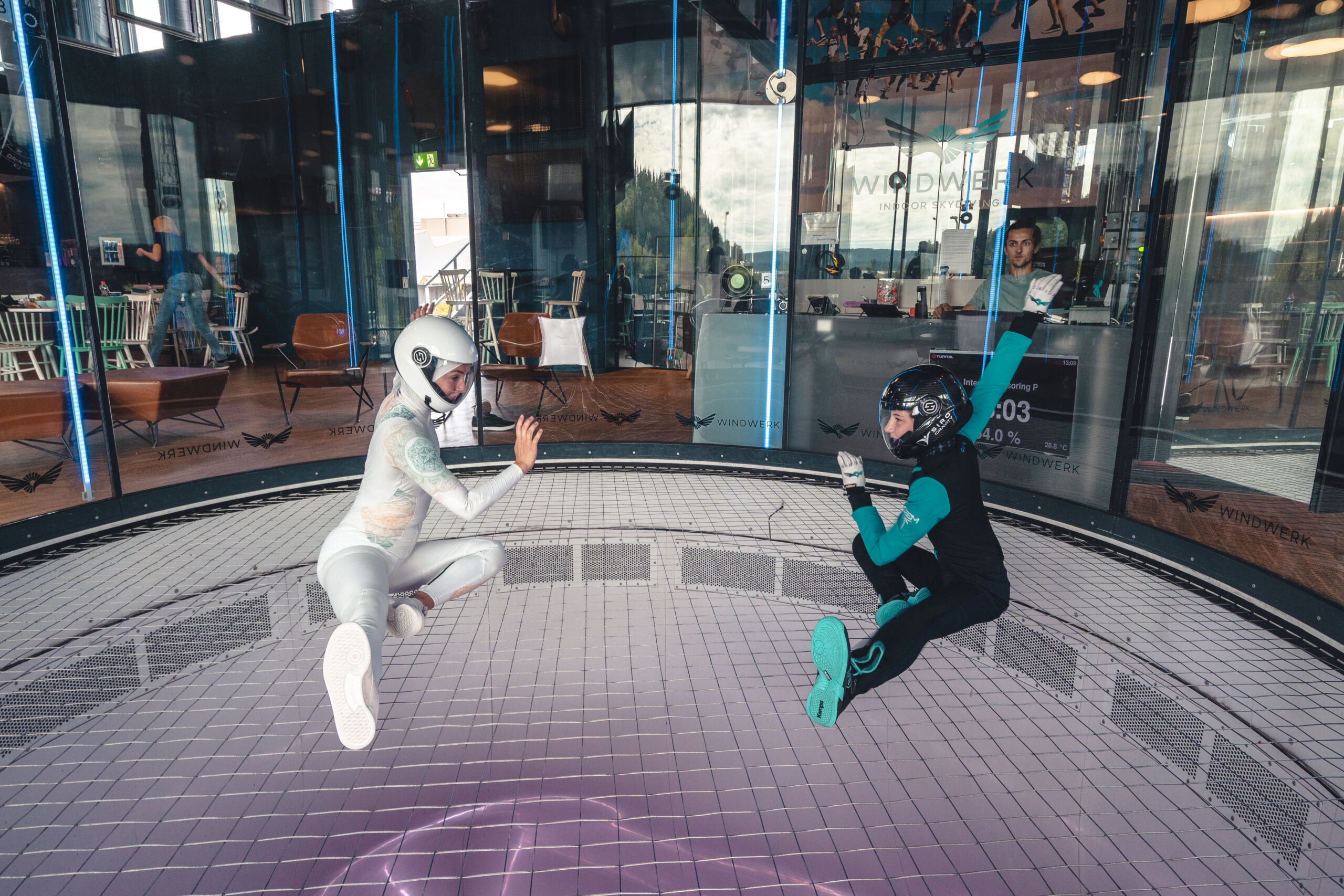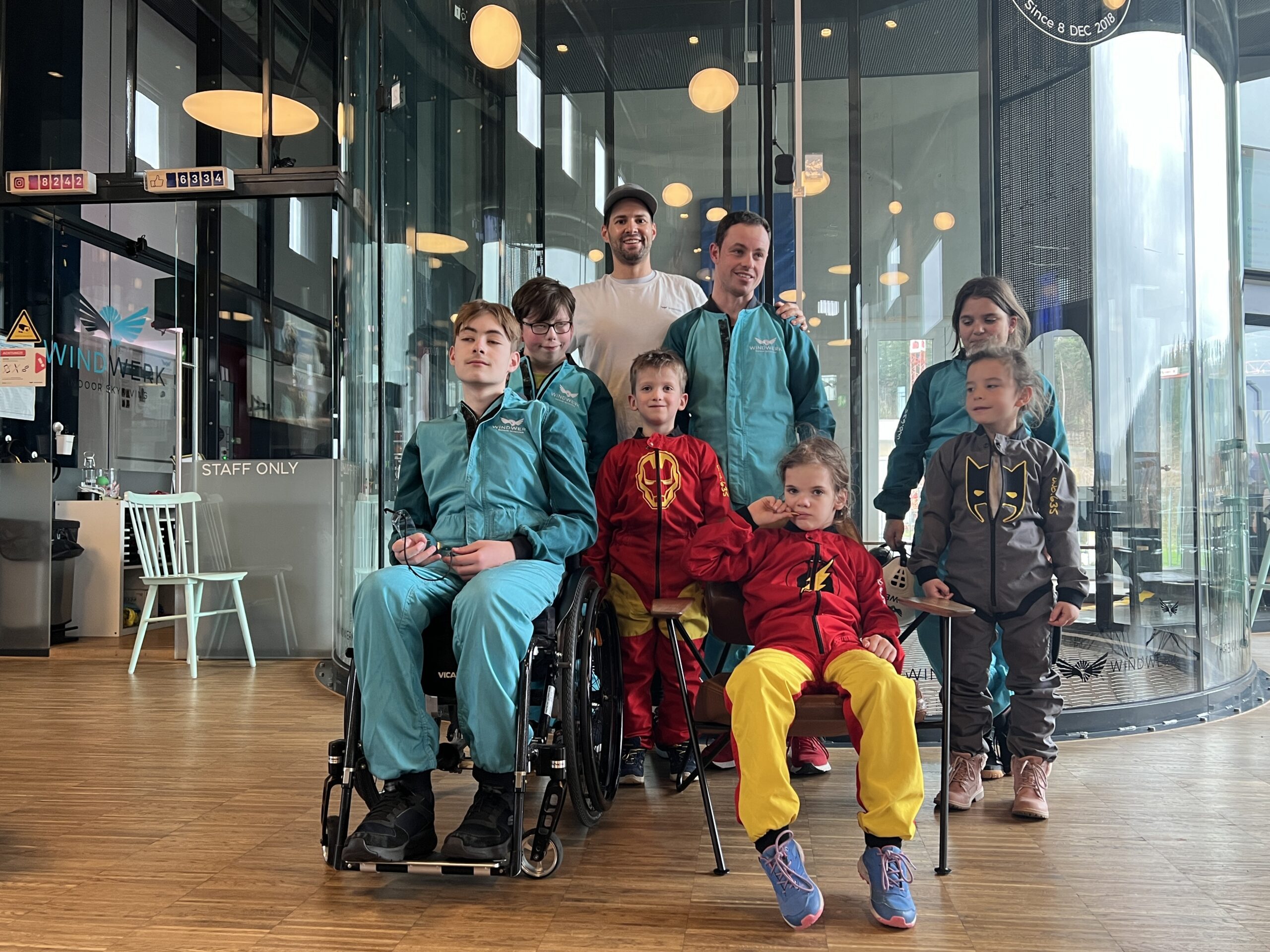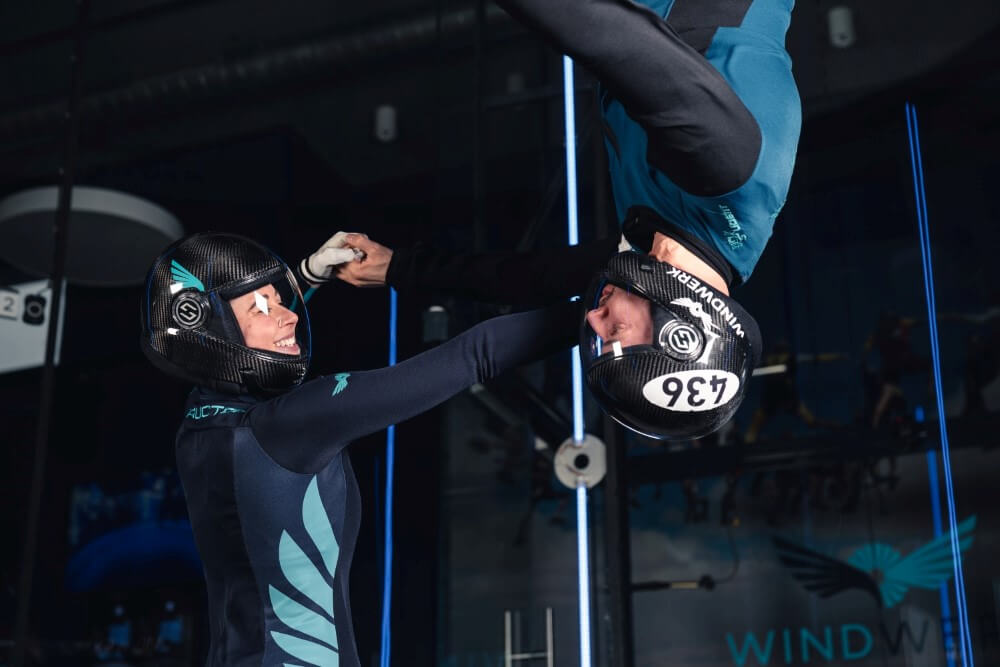“Why does a flight only last 60 seconds?”
We are often asked this question. It’s true that one minute seems pretty short, but there are good reasons for this flight duration. When you fly in a wind tunnel for the first time, it is usually a completely new experience. It gets your cardiovascular activity going, so you will probably be out of breath after your first flight. The muscle groups, especially the core, that you activate when flying are rarely used and therefore tire quickly. You have to balance your body on a column of air, using your arms and legs to maneuver – it’s quite exhausting. Indoor skydiving opens up a whole new world of movement. Endurance, agility, concentration and coordination are required. To get a feel for this, there are always at least two flights within a session.
By the way: In a parachute jump from a height of 3,500 meters (regular jump height), the freefall takes about 45 seconds. A flight in the wind tunnel therefore simulates slightly more airtime than a parachute jump from an airplane.
Indoor skydiving is becoming increasingly popular and was declared and certified as an official sport by the International Air Sports Federation (Fédération Aéronautique Internationale, FAI for short) in 2014. Today, indoor skydiving competitions are held at national and international level. The Indoor Skydiving Swiss Championships will take place on 10. and 11. March 2023 will take place. This time not with us, but with the colleagues in Sion. The FAI World Indoor Skydiving Championships will follow shortly afterwards in Slovakia from April 19 to 23, 2023.

Flying in a tunnel is also attractive because there are (almost) no barriers in terms of age, disability, gender or weight. If you are interested in indoor skydiving as a sport, you should – as with any sport – take it slowly. Of course, it’s tempting to get started right away, but you – or your muscles – will probably tire quickly and won’t be able to perform at your best. There is also a higher risk of injury. The more you practise, the better your body will get used to the unfamiliar strain. Building up flight muscles takes time. By flying regularly and gradually improving, you can build up your muscles, improve your skills and extend the amount of time you can fly. Complementary activities that will help you improve your body flying skills include swimming, Pilates and yoga. Apart from the fact that indoor skydiving is simply fun, it has several benefits: it defines the body (see our instructors 😊), builds functional strength and clears the mind.
Indoor skydiving is good preparation for skydiving because it gives you the opportunity to learn stability and the correct flight form in a controlled environment before you free fall several kilometers above the ground. By flying in a wind tunnel, you can find out whether you really like the feeling of flying.
Indoor facilities have now also established themselves as professional training centers for skydivers. Freefall is authentically simulated and, in addition to prone flight, all possible freefall positions can be practiced, from sit-fly and stand-up to head-down flight.
Incidentally, indoor skydiving was born in 1964, when the first person dared to take flight in the vertical airflow of a horizontally mounted aircraft propeller. Since then, the technology has developed considerably. The closed vertical wind tunnels create a uniform, turbulence-free airflow that makes the first flight maneuvers easy, even for beginners. On the one hand, the transparent flight chamber creates a feeling of space, while on the other, the audience can experience the flights up close. If you want to know more about sport flying, you can find all the important information here.













